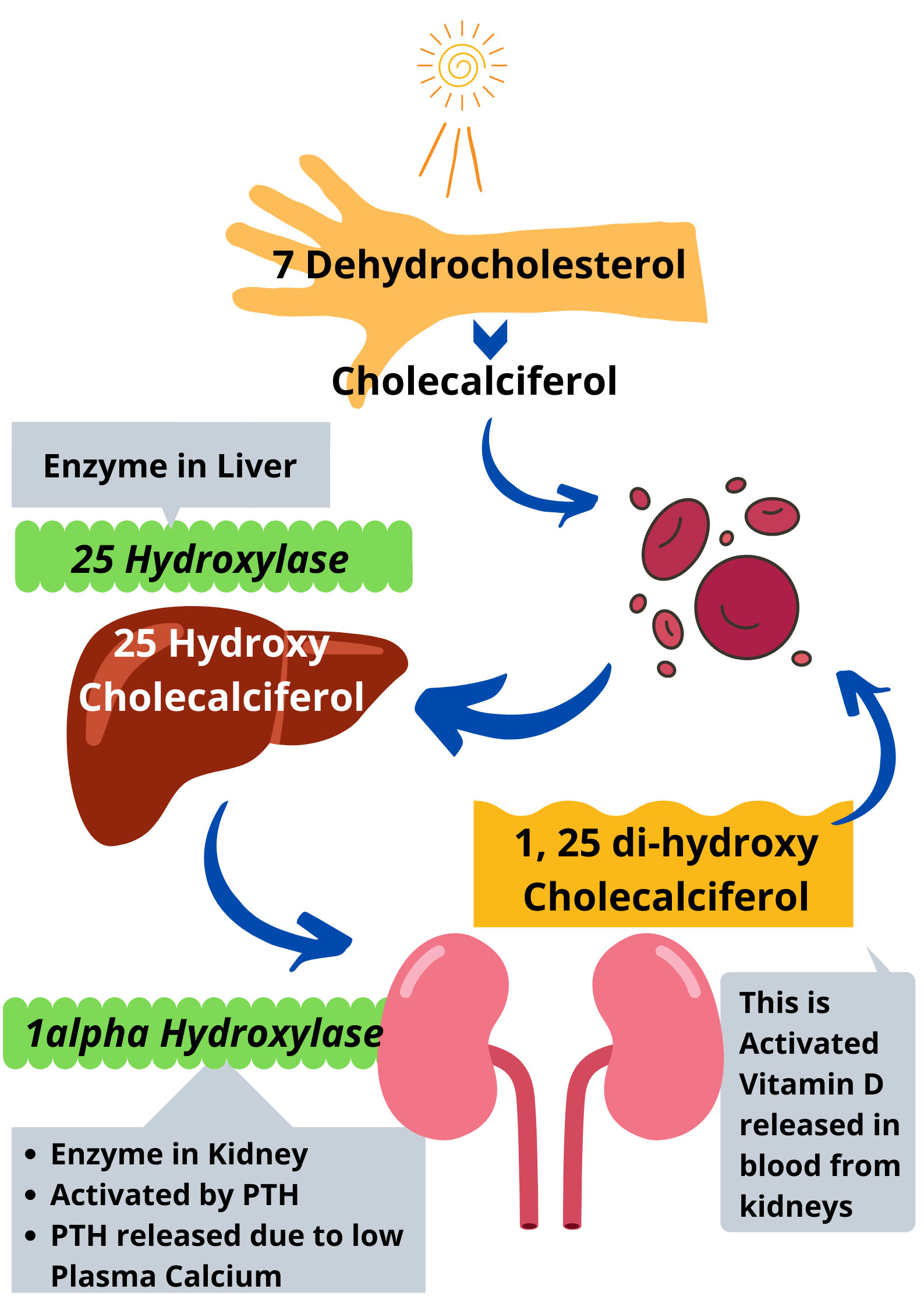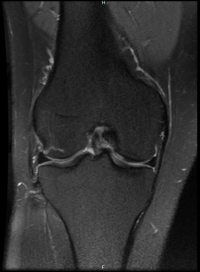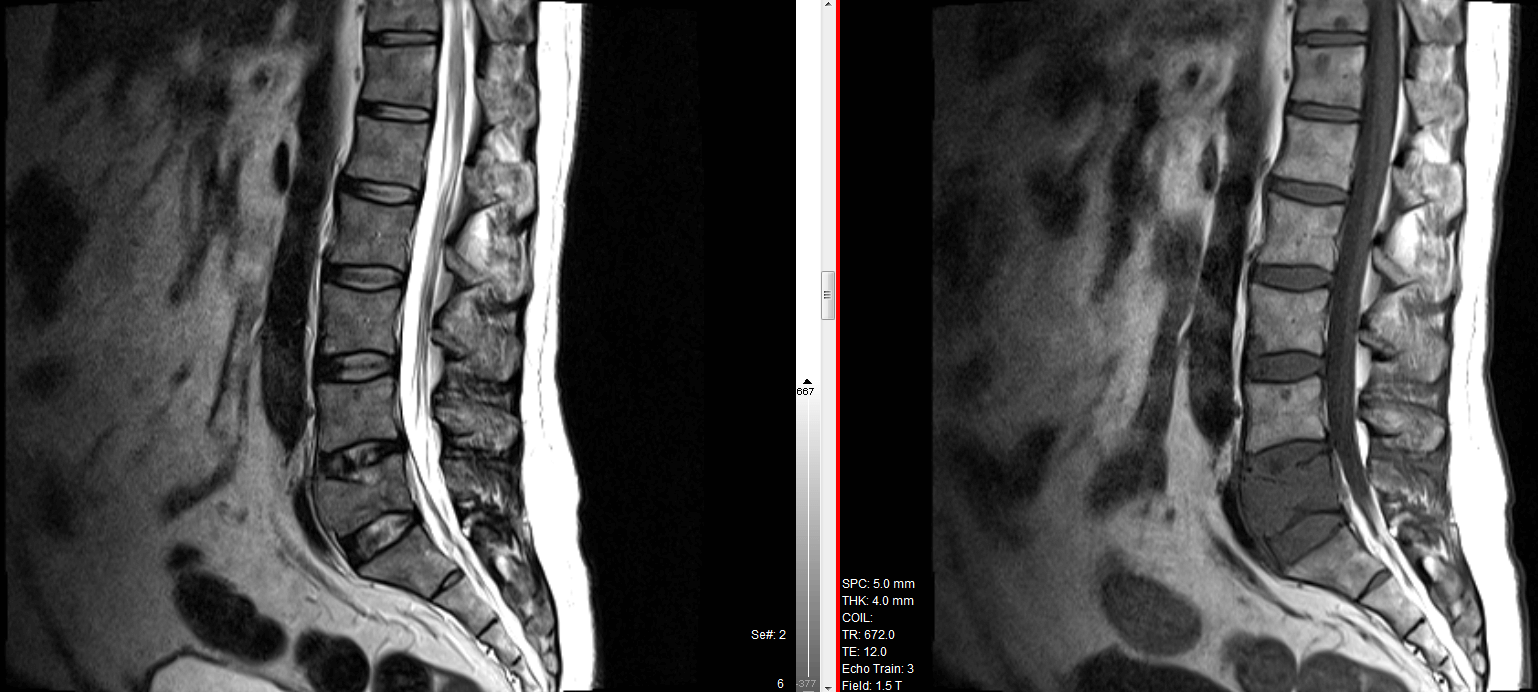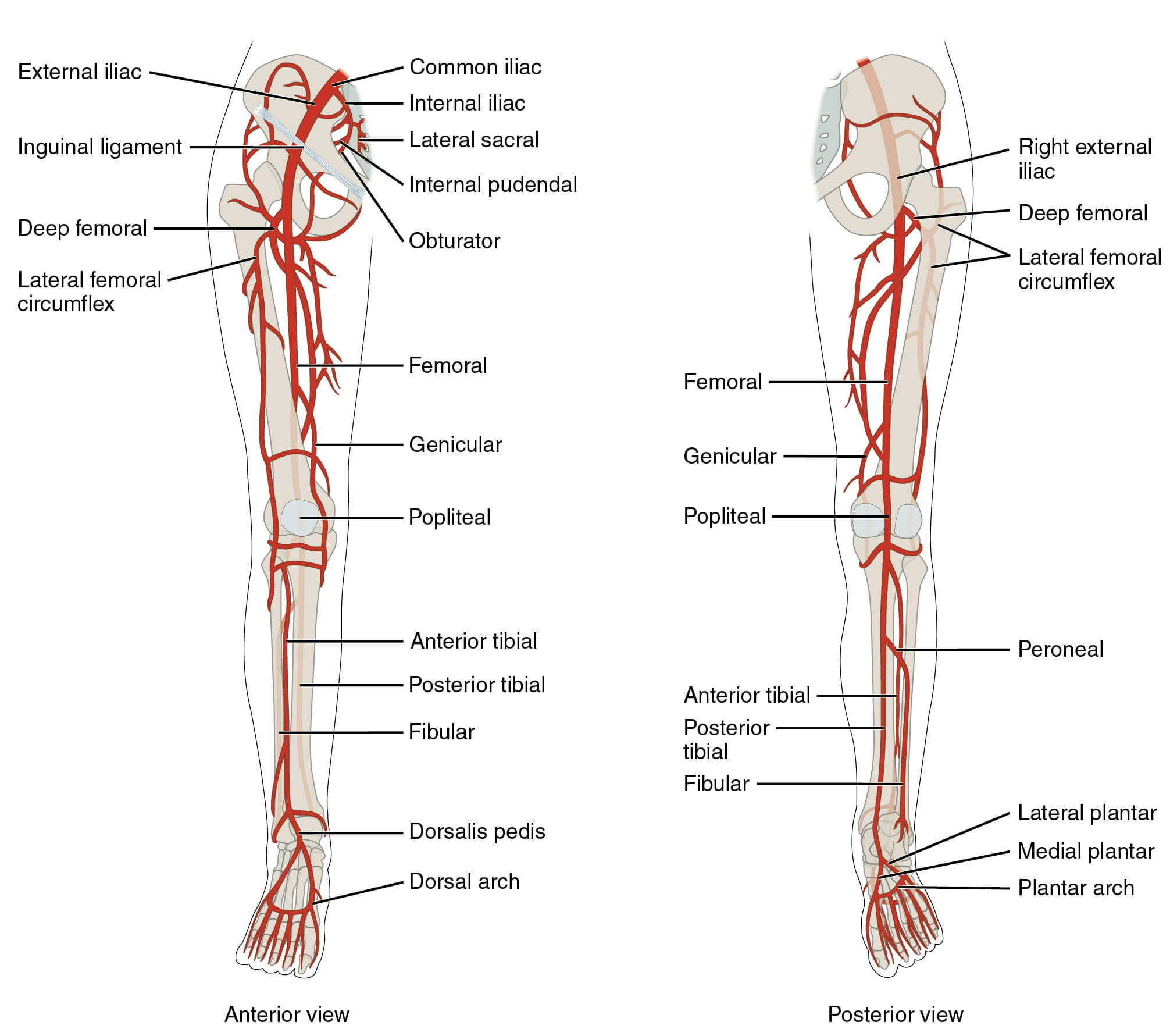7 Dehydrocholesterol (Skin)
- 7 Dehydrocholesterol (7 DHC) is present in the skin in the epidermis.
- UV light converts the above to Cholecalciferol (Vitamin D3) and it gets released into blood. sunlight causes photolysis of the B ring structure followed by isomerisation. Structural modification causes it to be ejected out of the plasma membrane into the extracellular space where it is drawn into capillary beds.
- Cholecalciferol is also ingested from food such as fish.
- Plant sources of vitamin D such as mushrooms contain ergocalciferol (Vitamin D2).
From the blood Cholecalciferol (and also ergocalciferol) gets transferred to Liver. Once in blood, it is bound to vitamin D binding protein and then transported to liver. In the liver an enzyme '25 Hydroxylase' converts cholecalciferol (and ergocalciferol) to 25 Hydroxycholecalciferol. (This enzyme adds a hydrogen molecule to the 25th carbon atom of cholecalciferol). It is also called Calcifediol. Excess of non-hydroxylated vitamin D is stored in the liver, adipose tissue and muscle.
From the liver the 25 hydroxycholecalciferol is transferred to kidney. In the kidney an enzyme, 1 alpha hydroxylase converts 25 hydroxycholecalciferol to 1, 25 dihydroxycholecalciferol. (this enzyme adds another hydrogen molecule to the 1st carbon atom). This is also called Calcitriol. This is the activated form of Vitamin D.
- Low calcium and low phosphate stimulates 1 alpha hydroxylase.
- When calcium is low, it triggers the parathyroid hormone (PTH) to be released. PTH activates the 1 alpha hydroxylase enzyme to convert calcifediol to calcitriol.

Role of Vitamin D
- The role of this now is to increase the calcium in the blood. (because the trigger to release PTH was low calcium) and also to increase phosphate. It does so by increasing the absorption of calcium and phosphate in the GIT. It also increases the reabsorption of calcium and phosphate in the kidneys. It also increases osteoclast activity to break bone down and release calcium and phosphate into the blood.
- Now calcium and phosphate when present together in the blood bond very well to each other and they then mineralise or precipitate into the bone. This is how vitamin D strengthens the bone.
What happens when we have no Vitamin D present?
Where there is no vitamin d present, the calcium increases in blood but the phosphate is not reabsorbed and hence gets excreted by the kidneys. So the bonding of calcium and phosphate doesn't occur and therefore the bone gets broken down or gets weaker.
Normal Vit D levels
- < 1 year - 400 IU (10 mcg)
- 1 - 70 years - 600 IU (15 mcg)
- > 71 years - 800 IU (20 mcg)
What happens with Vitamin D deficiency?
Vitamin D deficiency leads to decreased calcium absorption and ultimately the release of calcium from the bones in order to maintain circulating calcium concentrations.
In children it causes rickets and in adults it causes osteomalacia.
- Rickets - In children the bones are not mature, so they get bendy bones because they have more collagenous tissue rather than mineralised bone
- Osteomalacia - happens in adults. Because the bone has already matured, it keeps on losing calcium and phosphate and therefore becomes brittle.
What happens with overdosing of Vitamin D?
This never happens with overexposure to sunlight. It only happens with supplementation.
It causes Stone, Bones, Abdominal moans and Psychic groans
- increased calcium increases the likelihood of calcium based stones in kidneys (bones)
- calcium causes smooth muscle to contract. Hypercalcemia causes smooth muscle of the intestine to contract and thus causes stomach pain. (abdominal moans)
- too much calcium blocks the neurons ability to fire properly. so hypercalcemia causes general depression of the nervous system (psychic groans)





